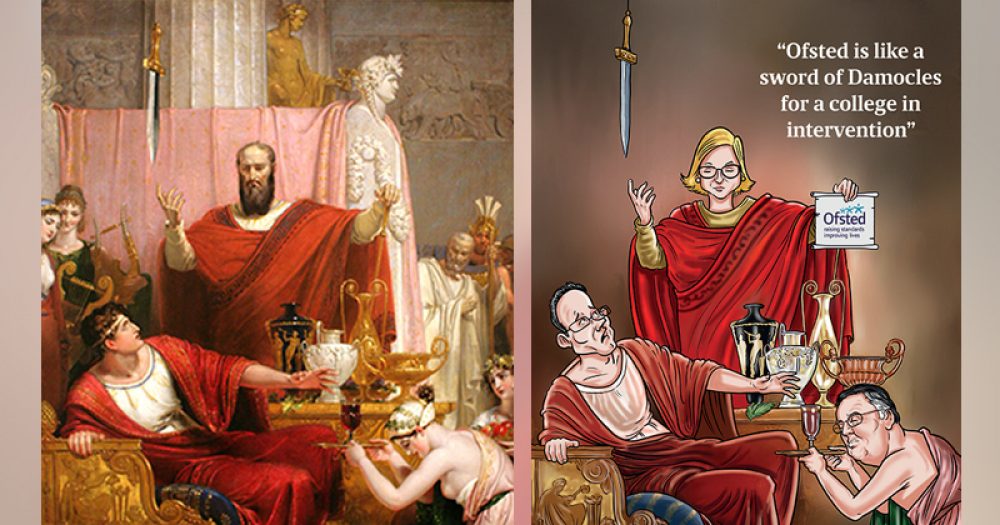It is extremely rare to hear a college principal openly criticise Ofsted.
So rare in fact, I felt it was only right to check with Andrew Cropley that it was ok to publish what he had said from a panel at the Association of College’s annual conference ‘hot topic’ session on “the balance between oversight, support and intervention”.
But after becoming something of an interim principal specialist, stepping in to several colleges in a financial crisis, Cropley had no concerns about speaking out.
As we report this week, he has been principal at West Notts college since July and praised the work of the FE Commissioner and his team (as an interim principal he also worked with them to complete the successful mergers of Stratford-upon-Avon College and Cadbury Sixth Form College).
But when asked what was wrong with the FE intervention regime, he accused Ofsted of pointless inspections that come shortly before mergers and “an absolutely unfair experience” which in one case, resulted in three staff “off with some mental health issues on the day of the inspection”.
What he described was a pattern of intervention to avoid insolvency, followed by support from government and the FE Commissioner’s team to put in place a recovery plan and preparation for merger which was then interrupted by what he perceived to be a damaging Ofsted inspection.
“At Stratford-upon-Avon College our report was published 56 days before it dissolved. What was the point apart from putting us through the mill?” he asked other senior college leaders at the event.
And, as FE Week discovered when looking for other examples, Ofsted published the Prospects College of Advanced Technology grade three inspection two weeks AFTER being dissolved as part of a merger with South Essex College.
In fact, Ofsted does have a deferral policy that they could have deployed, as I and the National Audit Office discovered when reporting on the demise of the largest private training provider, Learndirect.
Their policy, dated June 2016, states that a deferral may be granted if “the provision is due to merge, close or move and it is decided that no useful purpose will be served in inspecting it.”
Learndirect successfully avoided an inspection on 1 November 2016 by asking for a deferral on the grounds it was working towards an imminent sale.
So on the face of it maybe Cropley has a valid point: what was the point of spending public money sending inspectors to produce a report for an institution that within weeks would not exist?
Why didn’t Ofsted use the scarce inspection resource elsewhere, like they did for Learndirect in 2016?
These questions are difficult to answer, without access to all the facts.
Ofsted has a very transparent inspection regime and framework and FE Week would be the first to criticise them for not making their own judgements about who and when to visit.
And an inspection ahead of a merger may actually be useful for the merger partner to receive an independent assessment of the quality of the provision they are taking on.
But what is not so clear is why they choose to inspect when they do.
This is something that could be quite easily explained in their reports – along with working towards a stronger model of collaboration between Ofsted, the ESFA and FE Commissioner’s team.








Since when have we ever regarded anything Ofsted do as fair and reasonable?
I made the same comment a couple of weeks ago on a related subject.
Ofsted see everything in black and white – it’s either wrong, or it is right.
Did Andrew Copley challenge Ofsted when his inspection was announced? He had more than a valid reason, so perhaps we should stop viewing Ofsted as the grim reaper, and see them for what they really are – a government run audit body without any flexibility.
After all – as Mr Cropley states – they are the users of public money, and, guess what, where does public money come from?